#Morton Subotnick
Text










My albums selection for the next week:
Hair Police – The Empty Quarter
A.N . R.S – A.N.R.S
Uboa – The Origin Of My Depression
Merzbow / Shora – Switching Rethorics
Moineau Écarlate - Télé cervelle
Morton Subotnick – Silver Apples Of The Moon For Electronic Music Synthesize
Scarlet Diva - VIII
Aphex Twin – …I Care Because You Do
Chris And Cosey – Heartbeat
Hanin Elias – Future Noir
#hair police#antonina nowacka#uboa#merzbow#shora#moineau écarlate#morton subotnick#scarlet diva#aphex twin#chris and cosey#hanin elias#industrial music#experimental music#noise music#electronic music
110 notes
·
View notes
Text

(1968)
#vinyl#music#records#albums#1968#synthesizer#electronic music#morton subotnick#album art#60s#the wild bill#hologram parade#black and white#early electronic music#physical media
5 notes
·
View notes
Text
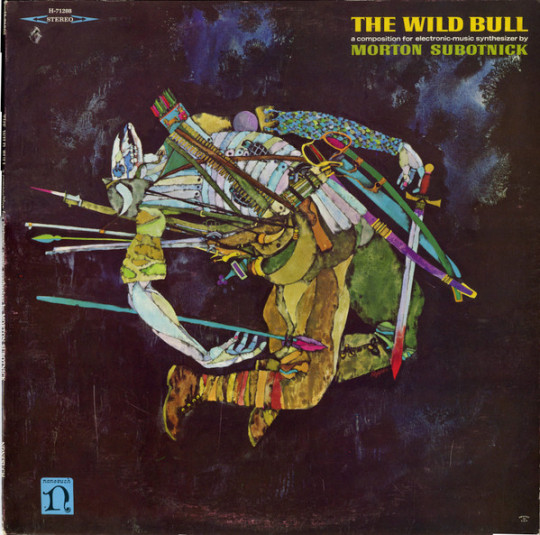
The Wild Bull - Morton Subotnick (1968)
Artist : Bob Pepper
13 notes
·
View notes
Text

Happy 90th, Morton Subotnick.
20 notes
·
View notes
Text
Carl Stone — Electronic Music from 1972-2022 (Unseen Worlds)

Electronic Music from 1972-2022 by Carl Stone
Unseen Worlds brings us their third installment of Carl Stone archival releases. Following "Electronic Music from the Seventies and Eighties" and "Electronic Music from the Eighties and Nineties," "Electronic Music from 1972-2022" makes a stab at filling in some of the gaps from Stone's sizable list of works. Presumably by the time this review gets published Stone will have added another release to his vast discography from the last 50 years.
"Electronic Music from 1972-2022" offers an until now unheard documentation of Stone's very earliest work in the two compositions "Three Confusongs" and "Ryouund Thygizunz," both realized in 1972 at CalArts, where Stone was studying with the composers Morton Subotnick and James Tenney. The voice of Carl's old friend and band mate, the late Z'ev (at this time still known as Stefan Weisser) was used on both these pieces. In stark contrast to the other tracks on this compilation, "Three Confusongs" and "Ryouund Thygizunz" develop slowly with heavy use of delays and resonance. Yet similarly to Stone's later works' extensive use of sampling, recordings of the voice of Z'ev reading his concrete poems provide the basic working material that launches in motion these haunting and mysterious pieces.
It was also while studying at CalArts that Stone's sampling practice found its future direction. Working as an archivist in the school's library, Stone got saddled with the job of transferring thousands of vinyl records to tape. This saturated Stone's ears with a vast and seemingly incongruous selection of music that included classical repertoire, electronic composition, world music and jazz, just to name a few. Stone had to transfer multiple discs at the same time, thus creating incorrigibly random collisions from this wealth of archival material. Through this process Stone began to see the juxtaposition and repetition of musical soundbytes as the modus operandi for his compositional practice.
Working in a vein with much in common to the use of sampling in hip hop, Stone has never shied away from plumbing the depths of popular music in a fearless and unabashed disregard for any notions of what might be regarded as good taste. It is perhaps this attitude, as much as the actual samples themselves, that imbues much of Stone's work with a heavy dose of humor and playful confrontation. The composition "Vim" from 1987 provides a good case in point, with samples from The Beach Boys' "Fun Fun Fun" being looped and chopped nearly beyond all recognition while still creating this nagging feeling of "Where have I heard this before?" Only towards the very end of the piece does it become apparent what one has just been subjected to in the form of this insidious earworm.
Stone's work can also be eminently danceable, often employing samples of drums and percussion in a process of accretion that can lead to dizzying heights of tension and release, not far in essence from Derrick May's work, such as the seminal "Strings of Life" from1987. Stone adds to this his experience from the trippy sixties, notching up the density and movement of his compositions till they take on a distinctly psychedelic feel. One can imagine whirling dervishes, The Master Musicians of Joujouka or your favorite neighborhood rave where ecstasy meets a discombobulated vortex of looping samples and very grooving beats.
Parallel to a summary of Stone's work during this fifty years, "Electronic Music from 1972-2022" also gives an overview of the development in electronic music technology which, as much as any conceptual preoccupations, often seems to have provided the impetus for much of the development in Stone's compositions. From working with Buchla synthesizers at CalArts to early samplers and Apple computers, each advancement in all this musical hard- and software has enabled Stone to dig deeper into his proclivity for iteration and sonic disorientation.
Track eight, the 2007 piece "L'os a Moelle," is a good example of this. Developed during a residency at the Groupe de Recherches Musicales studios in Paris, Stone devised a way of injecting new musical material into the shell of another piece of music. In the case of "L'os a Moelle," this involves using a brazenly strutting sixties rock riff as the shell and injecting a cavalcade of disparate and confusing samples, all following the tonal and rhythmic form of the original riff, which by the end of the piece has become completely subsumed by the injection of sampled material. If this description sounds confusing, then wait until you hear the track.
Three pieces from 2022 close out this compilation and in a way encapsulate all the ideas and techniques from the preceding tracks. For long-standing fans or listeners just discovering Stone's work, "Electronic Music from 1972-2022" will provide a fascinating look back over this composer's output from the last 50 years, straddling that fine line between rigorous experimentation and hilarious irreverence.
Jason Kahn
#carl stone#electronic music from 1972 to 2022#unseen worlds#jason kahn#albumreview#dusted magazine#electronic music#sampling#Morton Subotnick#James Tenney
6 notes
·
View notes
Text


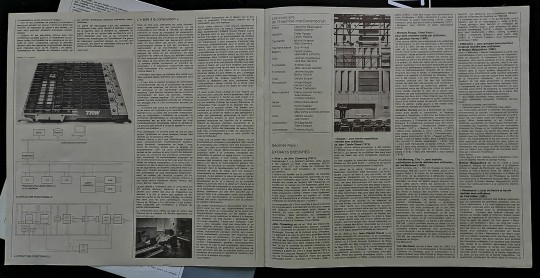




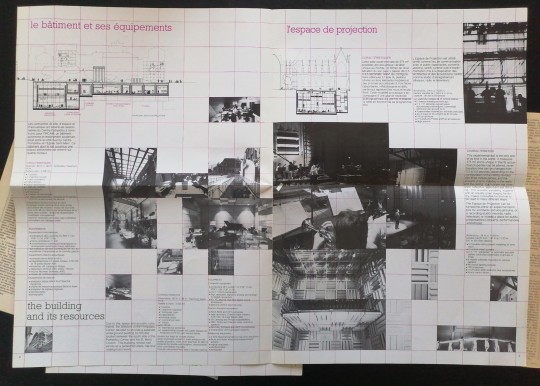

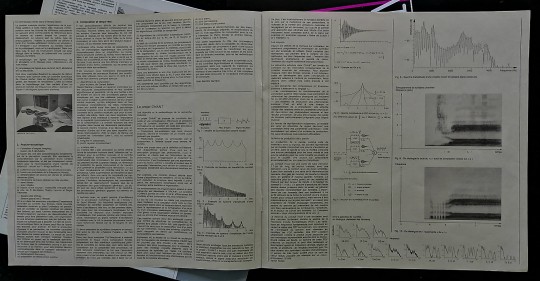
V/A
"IRCAM : Un Portrait"
(LP. Ircam. 1983) [FR]
#compilation#ircam#1983#contemporary#electroacoustic#electronic#concrete#avant garde#john chowning#jean claude risset#jonathan harvey#tod machover#mesias maiguashca#york holler#morton subotnick#pierre boulez#records#france
2 notes
·
View notes
Text
Musique Concrète and Other Experimental And Electronic Music
New Post has been published on https://grahamstoney.com/music/musique-concrete-and-other-experimental-and-electronic-music
Musique Concrète and Other Experimental And Electronic Music

In the subject Creative Music Technology at university last semester, I was asked to listen to a collection of experimental and electronic music to stimulate my creative imagination, and to write what I liked and didn’t like about it. Here’s my rather cynical take on the genre.
Musique Concrète
Pierre Schaeffer and Pierre Henry – Symphonie pour un Homme Seul
youtube
This piece reminded me of Strauss’s Symphonia Domestica; only less musical. I’m a Homme Seul (single man) and my life doesn’t sound anything like this. In his book La musique concrète, Schaeffer described the work as “an opera for blind people…”. Haven’t they suffered enough?
Edgard Varèse – Poème Électronique
youtube
The audio equivalent of Luis Bunuel & Salvador Dali’s Un Chien Andalou.
Does to my ears what the asbestos coating on the walls of the Philips Pavilion at the 1958 Brussels World’s Fair for which it was commissioned, would do to my lungs.
György Ligeti – Artikulation
youtube
George Lucas must owe Ligeti millions in royalties for R2D2’s sound effects. Initially I thought I was joking when I first wrote that, but I’ve since discovered that he was actually trying to create a sort of phonetic speech in electronic music, which pretty much fits R2D2’s dialogue. Plus, the title is German for “articulation”. That should have been a giveaway.
I thought this piece might make more sense to me if I played it backwards, so I dropped it into Logic Pro X and reversed it. I couldn’t tell the difference. Perhaps I would have enjoyed it more if I listened to it in the original quadraphonic. I’ll just end noting that Ligeti abandoned electronic music after composing this piece.
Iannis Xenakis – Concret PH
youtube
2 minutes and 44 seconds of breaking glass to my ears. I think I’d rather listen to Kraftwerk.
Karlheinz Stockhausen – Kontakte
youtube
It’s long. It’s too long. I think this is how Jacob Collier learned to play piano in his mother’s womb; but look at him now. The title is German for “Contacts”, which I think Stockhausen interpreted as “Just hit the things.” Maybe it sounds better in the original quadraphonic.
Stockhausen was evidently a pioneer of the extended dance remix, as the work exists in several versions: “Nr. 12”, “Nr. 12½” and “Nr. 12⅔”
Bernard Parmegiani – Accidents / harmoniques
youtube
Parmegiani had studied mime before turning his hand to electro-acoustic composition, and in this piece it really shows. From the album De Natura Sonorum (the nature of sound). I felt like there were Martians in my head listening to this. Surely he’s just playing a joke on us.
Pauline Oliveiros – Bye Bye Butterfly
youtube
Bids farewell to the institutionalized oppression of the female sex while also providing inspiration for the sound of the Theramin. Gave my new monitor speakers a good workout; I hope the neighbours enjoyed it too.
Tape Loops
Steve Reich – It’s Gonna Rain
youtube
I’ve got this pervasive feeling that it’s going to rain. I’m not sure why. I liked the way the meteorological message panned left and right. More like It’s Gonna Have An Acid Trip.
youtube
Halleluiah Part II is over. I’m not sure how I lasted the full 18 minutes.
Terry Riley – Mescalin Mix
youtube
Parts of this sounded to me like an industrial version of native Australian bush sounds. I felt like I was on a camping trip in the 23rd century.
Brian Eno – 1/1
youtube
From his album Music For Airports/Ambient 1, which apparently coined the term Ambient Music. Brian Eno has a lot to answer for. However, this track put me in a relaxing state, ready to fall asleep on the plane; so I liked it.
Sampling
Luc Ferrari – Ronda, Spain, June 2001
youtube
After being jolted awake by the sound of a loud sliding door opening to greet the day, I was drawn into this by the sweet sound of a French woman’s voice. I imagined she was Ferrari’s lover, speaking to him in bed after awakening on a warm Spanish summer Sunday morning. I wanted to know what she was saying, but my French isn’t good enough. In my mind’s eye, they head to a busy market together to buy some croissants for breakfast, where we hear a man’s voice repeating “numero quatro”, which I assumed is Spanish for “number 4”. As the voices fade, the sound becomes more musical and we return to the soft sound of Ronda speaking to her beloved back in their villa together. I quite liked it.
My interpretation, however, is not what the composer had in mind. According to him, the point of Les Anecdotiques (The Anecdotals) is to dispense with the story altogether. My busy market was, in fact, the sound of Spanish tourists in a museum. While he describes the woman’s words as “Spontaneous and intimate”, in this context they are simply words in a foreign language with no narrative purpose. Just another one of Pierre Schaeffer and Michel Chion’s sound objects, if you will. My narrative interpretation of what was intended as an explicitly anecdotal work is testament to the human brain’s tendency to make meaning out of nothing. It turns out Rhonda is a village in Spain, not a woman.
Still, I enjoyed my little fantasy, thank you Luc.
John Oswald – Manifold
youtube
Wow, this was short. I didn’t even have time to eat breakfast while listening to it. It was only about as long as the Spotify ads, but certainly more fun. I recognised a couple of songs, like U2’s With or Without You and Sinead O’Connor’s Nothing Compares To You. Artists who use samples liberally often sample obscure works, sometimes affording them attention they would otherwise have missed; but in this work Oswald went mainstream. It sounded to me like the soundtrack to a sample-abusing hip-hop artist from the 1990’s being beaten up in a boxing ring by all the artists who reckoned he’d ripped off their work.
Tod Dockstader – Water Music: Part III
youtube
I quite liked this piece. The cuteness of the sounds and the stereo effects bouncing between the left and right channels really drew me in. I’ve recently got myself some decent monitor speakers for my home studio and this piece really worked on them. Pretty amazing for something released in 1963.
Dockstader started out in the 1940’s, prior to the invention of magnetic tape, editing his steel wire recordings with a lit cigarette. That makes me realise how much I take the piece-of-crap Logic Pro X File Editor for granted. Listening to this, I found myself wanting to know what was going to happen next, like I was watching a soap opera on TV; only with no actual story.
Synthesis
Karlheinz Stockhausen – Studie I
youtube
I found this quite disorienting to listen to. I guess it was revolutionary in 1953 but I reckon now you could whip it up in Ableton in about 5 minutes using the Random MIDI Effect and some automation.
Eliane Radigue – Jetsun Mila (Pt.1) / Birth and Youth (Excerpt)
youtube
I liked how the pulsing ambient drone sound in this grew over time; it drew me in and had me wondering what was going to happen next. Unfortunately the answer was: not much. Gradually a rhythmic element with some high pulsing tones which grew over time came in. It was a bit like listening to a very slow EDM dance track from underwater in a diesel-powered submarine going at full throttle for 12 minutes.
Laurie Spiegel – Appalachian Grove: I
youtube
I liked the pulsing stereo effects in this piece and the way the tonal characteristics of the sound varied while the pitch changed. It’s much more melodic than the other tracks we’ve listened to and that made it more enjoyable to my ears. It got a bit harsh in the middle though. This piece puts the musique in musique concrète.
Morton Subotnick – Silver Apples of the Moon – Part A
youtube
Perhaps the sound designer for Star Wars had this in mind when creating the sound effects for R2D2. I kind of lost the flow of the conversation without the witty English-accented retorts from C3PO though. Morton Sobotnick is described as The Mad Scientist in one interview, and I think if I listen to this too often I’ll end up fitting one of the DSM-5 diagnostic categories I’m learning about over in PSYC1002.
Suzanne Ciani – Concert at Phil Niblock’s Loft
youtube
This piece had some funky sounds that I liked. The start reminded me a bit of Kraftwerk but without the rhythm and melody; although it did get more melodic later. I’d probably give it a Distinction for its use of technology given it was made in 1975, but only a Credit for musicality.
Barry Schraeder – Lost Atlantis: Introduction
youtube
At first, I thought this sounded a lot like a modern ad for KFC; then I realised I was hearing a Spotify ad.
I liked the ambient sounds in this piece and the way it surged in and out with its “mysterious tone colors”. It slowly builds to a crescendo until we get the drop that EDM lovers crave, and then built more quickly to the ultimate drop at the end. I kept wondering what was going to happen next; I’d still rather listen to Fleetwood Mac, Supertramp or Queen though.
Contemporary Examples
Amon Tobin – Foley Room
DJ & producer. Retain percussive quality through sounds. Horsefish & Esther’s. Create beauty and delicate textures from sounds. Pitched percussive material. Fast loops. New textures. Funky beats. Check out the Foley Room Documentary.
Aphex Twin – 1ST 44
youtube
Acid house DJ in rave scene. Intelligent Dance Music. More complex sampling, polyrhythms, rhythmic patterns. From Collapsed album. Polyrhythms sounded funky. Lots of variation.
Holly Herndon – Chorus
Intersection of humanity and technology. Recorded web browsing. Stereo ping-pong effects. Here’s a talk she gave about her creative process.
Kaitlyn Aurelia Smith – Riparian
youtube
This was my favourite out of these three, largely because it sounds the most musical to my ears. I liked the pulsing beat in this track. I can hear a bass line for instance, melodies played on the synth and lyrics, although I can’t tell what they are saying. I also like the way the soundscape swirls around when listened to with headphones. It feels ambient, immersive and musical all at the same time. I get the sense that she’s using the electronics at her disposal in service of the music rather than the other way around. There’s even a great video about how she uses modular synthesis.
Graham Stoney – Foster le Concrète
“How hard can it be?”, I asked myself. And since I had an assignment to do, I wrote my own musique concrète track based on the drum rhythm from one of my favourite songs, Coming of Age by Foster The People. I even made a breakdown video showing how I did it; because that’s what the assignment required.
youtube
Conclusion
I didn’t take too easily to some of the more experimental musique concrète pieces we studied at the beginning of this semester. The weekly listening tasks felt harsh to my untrained ears and I would think mean things like:
“Didn’t the Geneva Convention ban cruel and unusual punishment?”
Perhaps these tracks will never be my preferred go-to pieces for chilling out on a Friday night, but when I look back at some of my cynicism-laced early comments in these discussion threads, I cringe. I just didn’t appreciate the historical significance of these pieces and how they might have influenced later electronic music that I do enjoy, like Kraftwerk say.
Then in Angharad Davis’s Music Colloquium Series talk on George Antheil’s Ballet Mécanique, when she played a snippet of the work I heard sounds reminiscent of musique concrète. Sure enough, they were roughly contemporaneous, and Antheil had been living in Paris at the time musique concrète was just getting started. You never know when something you study in one arena will pop up elsewhere.
Another thing I’ve learned in this subject is about taking creative risks and learning to follow my gut instincts without worrying whether a concept will work, or other people will like it. This has been an opportunity for me to explore that. My Formative Skills Assignment piece Foster le Concrète was in part a reaction to my frustration at the lack of discernible rhythm in some of the early pieces we studied. However, I really didn’t know whether the concept was going to work, and that was a little anxiety-inducing; especially given that I was doing it for an assignment which would be graded. I was quite touched to hear other students say they liked the end result, and I feel more confident about following my gut instincts in future and seeing what I end up.
Finally, I’ve been really inspired by the creativity of the other students in this subject. It’s been a weird experience studying online this year without ever meeting them in person, but I’ve really enjoyed hearing the creative works everyone came up with. They’re all so distinctive and amazingly different, it’s incredible; yet they were all products of the same brief. I can’t wait to hear everyone’s works on the radio, TV, movies, video games, Spotify, or whatever audio technology is around when we all graduate: live streaming direct to our neurons perhaps?
#Amon Tobin#Aphex Twin#Barry Schraeder#Bernard Parmegiani#Brian Eno#Edgard Varèse#Electronic Music#Eliane Radigue#Experimental Music#György Ligeti#Holly Herndon#Iannis Xenakis#John Oswald#Kaitlyn Aurelia Smith#Karlheinz Stockhausen#Laurie Spiegel#Luc Ferrari#Morton Subotnick#Musique Concrète#Pauline Oliveiros#Pierre Henry#Pierre Schaeffer#Steve Reich#Suzanne Ciani#Tod Dockstader#Music
11 notes
·
View notes
Video
youtube
Morton Subotnick - Touch (1969)
[Electronic - Abstract - Experimental]
5 notes
·
View notes
Text
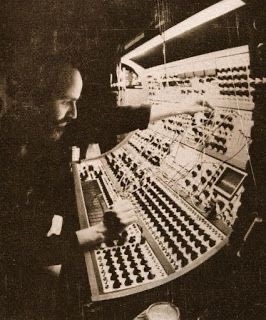
Morton Subotnick - Samuel Beckett - Waiting for Godot (1976)
Photo by Lon Holmberg
0 notes
Text
Until Spring - Morton Subotnick
The album Until Spring by Morton Subotnick, comprised of Until Spring Pt. 1 and Until Spring Pt. 2 is a fascinating album of electronic music and a fantastic example of music made with a Buchla synthesizer. The music on this album I can best describe as brain scratching music from the 1970s. The album itself is not on streaming platforms, but Until Spring Pt. 1 and Until Spring Pt. 2 are a part of the album "Subotnick: Electronic Works, Vol 2."
#dailyalbumrecs#music recommendations#music recommendation#album recommendation#morton subotnick#Until spring
0 notes
Text
youtube
Originally released on vinyl in 1967, here's part II of Morton Subotnick's Silver Apples of the Moon. I first heard of him when I was a kid because I happened to randomly have (and still have!) a copy of an educational music game he produced, Morton Subotnick's Making Music, and having no idea who this person was or even if he was a real person in the first place. Much much later I looked him up and found he made a bunch of extremely weird synthesizer music from the '60s to the '80s, including this thing
1 note
·
View note
Text


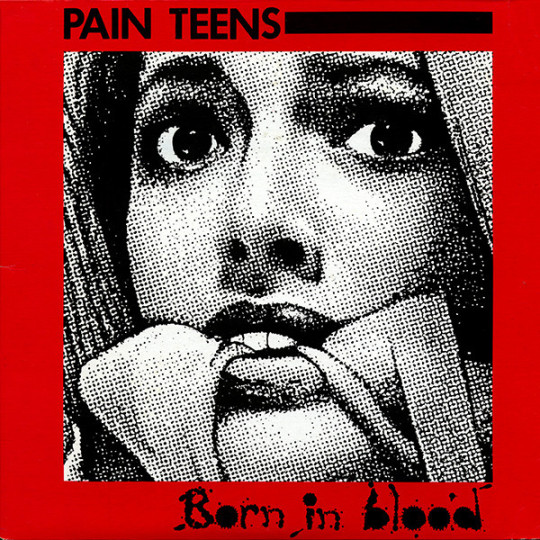


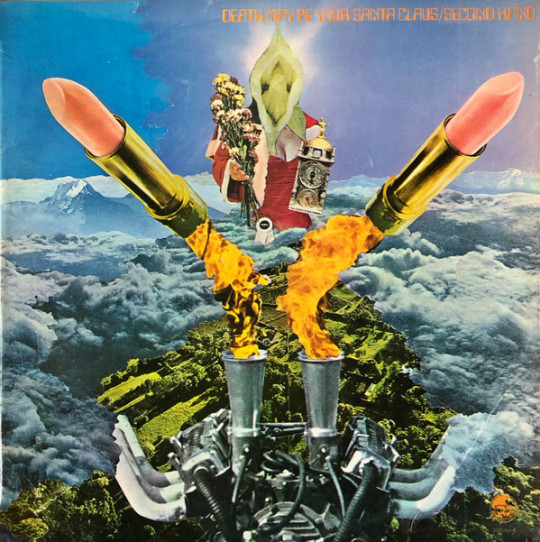
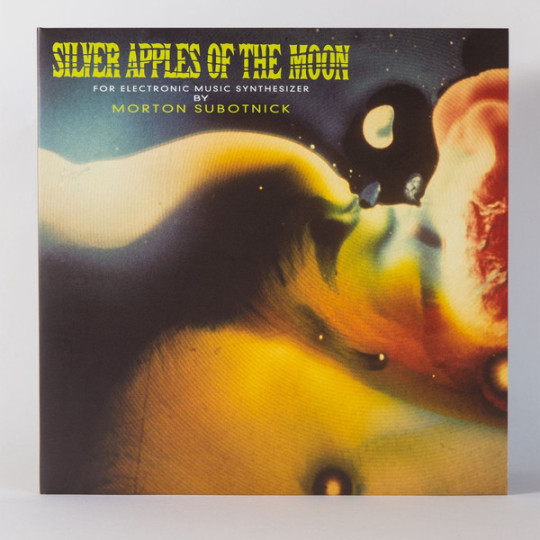
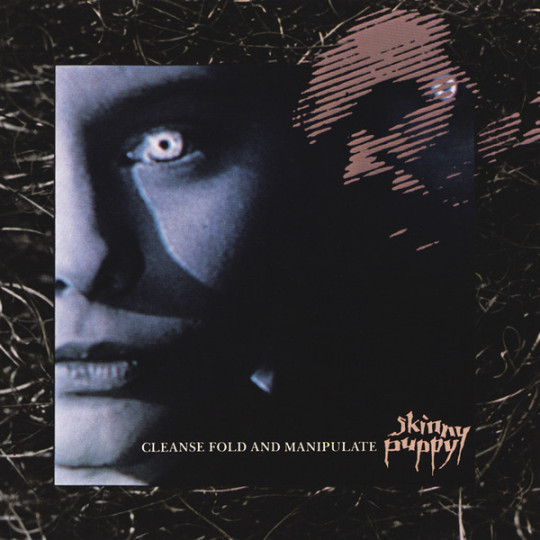


My albums selection for the next week :
Chris And Cosey – Heartbeat
Λένα Πλάτωνος = Lena Platonos – Εξισορροπιστές = Balancers
Pain Teens – Born In Blood
Pharmakon – Contact
Rg Rough - 70
Second Hand – Death May Be Your Santa Claus
Morton Subotnick – Silver Apples Of The Moon For Electronic Music Synthesize
Skinny Puppy - Cleanse Fold And Manipulate
This Immortal Coil – The World Ended A Long Time Ago
ису сумер - путь 13 ножей
#musical sugestion#musical selection#chris and cosey#lena platonos#pain teens#pharmakon#rg rough#second hand#morton subotnick#skinny puppy#this immortal coil#coil#electronic#experimental music#noise music#industrial music#krautrock#psychedelic rock
77 notes
·
View notes
Photo

Bob Pepper’s album art for Morton Subotnick’s The Wild Bull
747 notes
·
View notes
Text
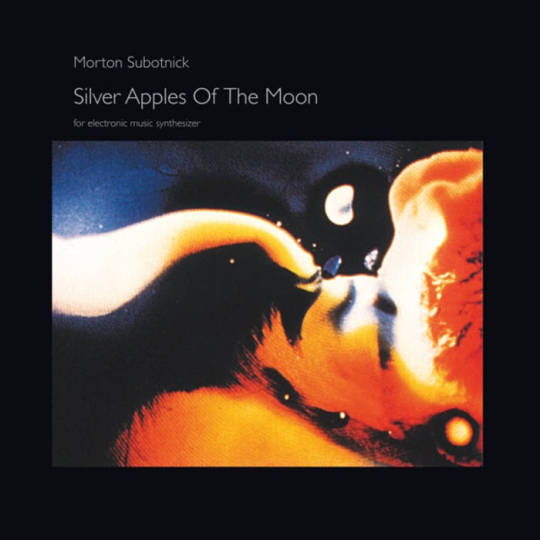
#Electronic#Tape Music#Modern Classical#Experimental#Electroacoustic#Progressive Electronic#1960s#1970s
25 notes
·
View notes
Text

Morton Subotnick
a pioneer of electronic music
6 notes
·
View notes
Text
kinda funny coincidence: Silver Apples, the first rock group to use a synthesizer (commonly accepted anyway) and Morton Subotnick who was the first composer commissioned by a record label to make an entirely synthesized piece—-Silver Apples Of The Moon—-one wasn’t named after the other, they both just lifted it from the same Yeats poem
12 notes
·
View notes